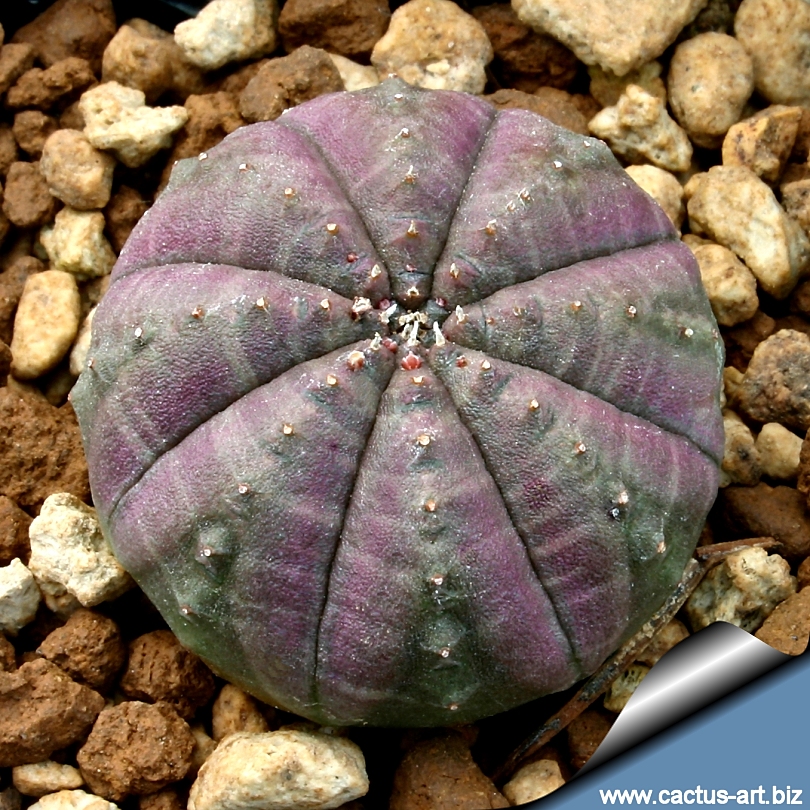|

Euphorbia
symmetrica is a beautifully flattened sphere with horizontal purplish
banding and very similar to
Euphorbia Obesa.
Unusual in cultivation it is still rare to find.
Description: This plant can look nearly
identical to
Euphorbia obesa, but rounder, flatter and not growing as tall
(dimension up to 6 cm , 8 cm diameter; 8 to 10-sided) It has usually
more, somewhat different, markings. The flowers are also more numerous
with several from each point of origin, it has as well a distinctive
long taproot.
Cultivation: Like a sunny position. It does best
in a mineral soil, good drainage is essential. Water sparingly during
the summer months and keep dry in winter. It is a slow growing long
lived plant and once established, it will be content in its position and
with its soil for years. It can tolerate moderate shade, and a plant
that has been growing in shade should be slowly hardened off before
placing it in full sun as the plant will be severely scorched if moved
too suddenly from shade into sun.
It is propagated from seed sown during spring or summer. Flowering can be achieved within 5-8 years.
Photo of conspecific taxa, varieties, forms and cultivars of
Euphorbia obesa.


|